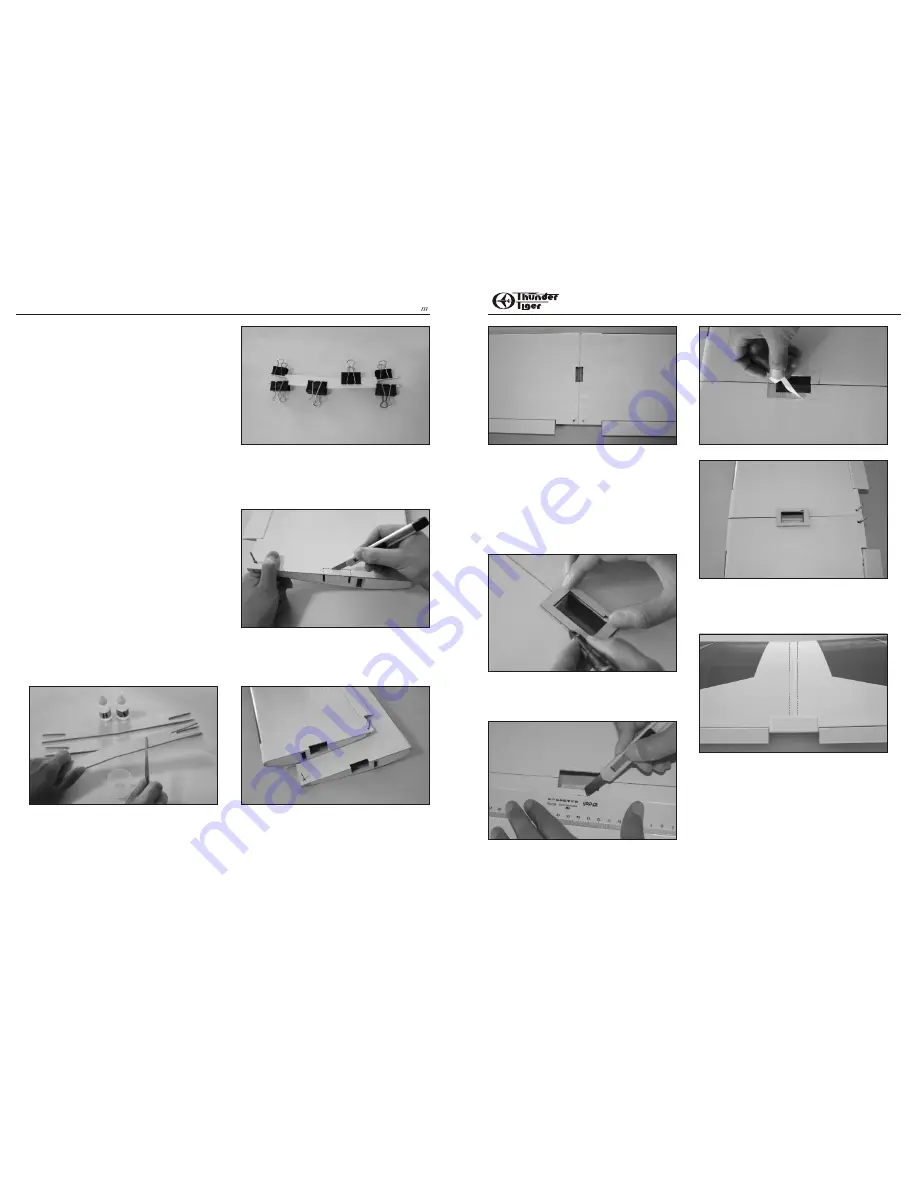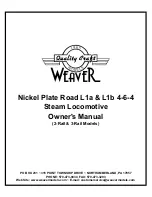
WING
PREASSEMBLY
PRE-ASSEMBLY NOTES
1. If you are not an experienced R/C pilot, plan to have a
fully competent pilot check your completed model and
help you with your first flights. Even though we have tried
to provide you with a very thorough instruction manual,
R/C models are rather complicated and an experienced
modeler can quickly check over your model to make sure
your first flights are successful.
2. Please assemble your model exactly according to these
instructions. Do not attempt to modify or change the
Tiger
Trainer
in any way as doing so may adversely change
its flying characteristics.
3. Before you begin, please check the entire contents of
this kit against the parts drawing make sure that no parts
are missing or damaged. This will also help you to
become familiar with each component of your plane. If
you find that any of the parts are either missing or
damaged, please contact your dealer immediately for
replacement.
Note: Your dealer cannot accept kits for return if
construction has begun.
4. Trial fit each part before gluing it in place. Make sure
you are using the correct part and that it fits well before
assembling. No amount of glue can make up for a poor
fitting part.
WING ASSEMBLY
2. Clamp the three joiners together with clothes-pins or
other small clamps and wipe off the excess epoxy before
it cures. Allow the epoxy to cure before removing the
clamps.
3.On the bottom of one wing half, make a mark 3/8''
(10mm) from the inside edge of the wing, between the
pre-cut slot in the center rib and the rear edge of the spar
box. Use a hobby knife to cut away the covering and
balsa sheeting in this area.
7
6
1. Open the small wood parts bag and remove the three
1/8'' plywood wing panel joiners. Gently sand the edges
to remove any rough edges.
Mix up some 5-minute epoxy and apply it to both sides of
one of the joiners. Sandwich this piece between the
other two joiners, sand align the edges of all three
joiners.
4. Also remove the portion of center wing rib in this area
to allow clearance for aileron servo. Repeat the same
process on the other wing half.
Before gluing the two wing halves, trial-fit the wing
joiner into the wing panels. If it is not easy to slide into
the wing, sand it until it will. To fit properly, note that the
wing has an upward “bend ” in it: this is called dihedral.
5. With 30-minute epoxy, liberally coat all sides and
edge of the wing joiner and slip it into one wing half.
Now coat the inside edge of the center wing rib where it
will join to the other wing half. This is called the “root” of
the wing.
Join the two wing halves and firmly press wing panels
together. Wipe off any excess epoxy with a paper towel
and rubbing alcohol. Make sure the two panels are
accurately aligned with each other. You may hold
together with several strips of masking tape.
6. Place the servo tray centered over the cutout in the
bottom of the wing. Mark around the servo tray with a
pencil.
7. Remove the tray, and use a sharp knife to score the
covering material where marked. Remove the covering
material to expose the wood underneath. Use thick CA
or epoxy to glue the servo tray securely in place.
8. Locate the white trim tape and apply to center wing
joint. Start at the servo tray and work around the wing.
Gently pull on the tape while pressing it down onto the
wing to slightly stretch the tape into place and provide a
smooth seam.
Lightly sand the edges and one side of the plastic wing
protector to remove any roughness and help the glue
stick to the plastic. Use thick CA or epoxy to glue the
wing protector to the top surface of the wing so it is
centered over the wing joint and flush with the wing
trailing edge.
Tiger Trainer
MK


























